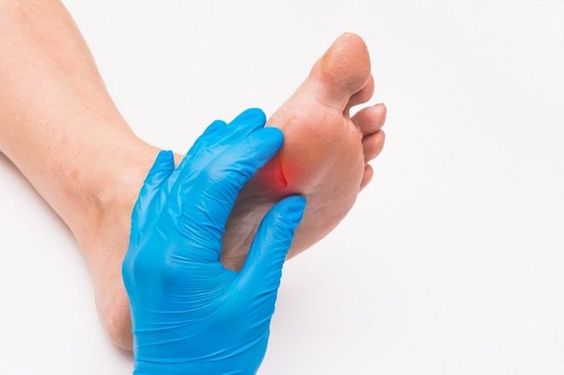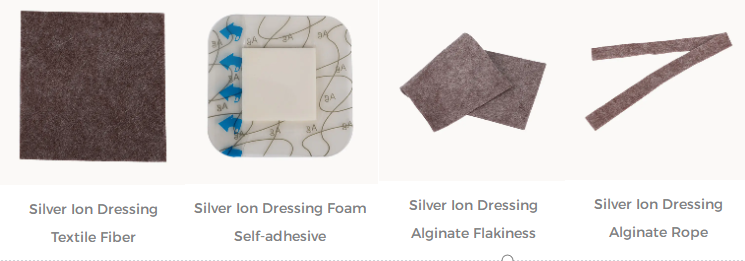For diabetic patients, skin cleansing is the most critical step before changing dressings for diabetic feet. This is because the skin of diabetics is susceptible to infection, which can lead to delayed wound healing and complications. Therefore, keeping the skin clean can effectively prevent infection and complications, and is a very important step in the treatment of diabetic feet.
Let's look at a clinical case of diabetic foot wound infection:
Basic information about the patient:
Patient Li, male, 60 years old, diabetic, went to the hospital for diabetic foot ulceration three months ago, and the wound has healed after treatment. Recently, due to poor control of diabetes, new ulcers appeared on the feet, which required dressing changes.
Healing:
1. Skin cleaning and disinfection: Before changing the dressing, the doctor first cleaned and disinfected the skin of the patient's feet. After cleaning, the doctor found that the skin around the wound was red, swollen, and oozing, and suspected that the patient had been infected.
2. Bacterial culture and drug sensitivity test: In order to determine the pathogen of infection and select the appropriate antibiotic treatment, the doctor conducted bacterial culture and drug sensitivity test on the patient's wound. The results showed that the patient was infected with Staphylococcus aureus, which was sensitive to cephalosporins and fluoroquinolone antibiotics.
3. Antibiotic treatment and dressing change: According to the results of the drug susceptibility test, the doctor prescribed a combined oral antibiotic treatment regimen of ceftriaxone sodium and norfloxacin sodium twice a day for a total of 14 days. At the same time, the doctor also smeared the patient with local antibacterial drugs and changed the dressing. With Silver Ion Dressing, silver ions can destroy the cell walls and membranes of bacteria, thereby inhibiting the growth and reproduction of bacteria. In addition, silver ions can also affect the metabolism and DNA replication of bacteria, making them unable to grow and reproduce normally. It can directly bind to the protein and DNA of bacteria, thereby destroying its biological activity and structure, leading to the death of bacteria. In addition, silver ions can also promote redox reactions in cells to generate active oxygen and nitrogen, thereby destroying bacteria and effectively inhibiting the occurrence of wound infection.
4. Observation and review of the patient's condition: During the treatment process, the doctor closely observed and reviewed the patient's condition. After a week of treatment, the patient's symptoms of redness, swelling, and exudation around the wound were significantly improved, and the wound began to heal. During treatment, patients should pay attention to controlling their diabetes, keeping their feet clean and dry, and avoiding reinfection.
To prevent wound infection daily, the steps of skin cleaning are as follows:
1. Wash your hands: Before you start cleaning, wash your hands with soap and warm water to prevent hand bacteria from infecting the wound.
2. Wash the skin: Gently wash the skin around the wound with warm water and soap to remove dirt and bacteria. Be careful not to rub or brush too hard as this may irritate the wound.
3. Disinfect the skin: Disinfect the skin around the wound with disinfectant or alcohol cotton balls to kill bacteria. The concentration of disinfectant should be selected according to the doctor's advice.
4. Apply medicine: After cleaning and disinfection, you can apply the medicine prescribed by the doctor to promote wound healing and prevent infection.
It is important to note that the skin of diabetics is prone to irritation and damage, so great care needs to be taken when performing skin cleansing. If the patient finds abnormalities such as redness, swelling, pain, and exudate on the skin, he should inform the doctor in time and receive treatment. Skin cleaning is the most critical step before dressing changes for diabetic feet, which can effectively prevent infection and complications. When cleaning the skin, you need to be careful and follow the doctor's advice and treatment plan to ensure the effect and safety of the treatment.
For more information on Innomed® Silver Ion Dressing, Refer to the Previous Articles. If you have customized needs, you are welcome to contact us; You Wholeheartedly. At longterm medical, we transform this data by Innovating and Developing Products that Make Life Life easier for those who need loving care.
Editor: kiki Jia
Date: August 30, 2023

 English
English عربى
عربى Español
Español русский
русский 中文简体
中文简体








